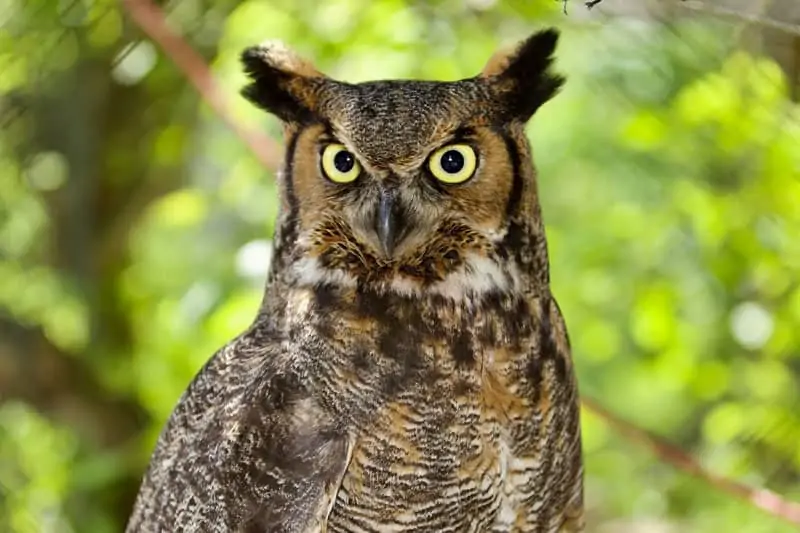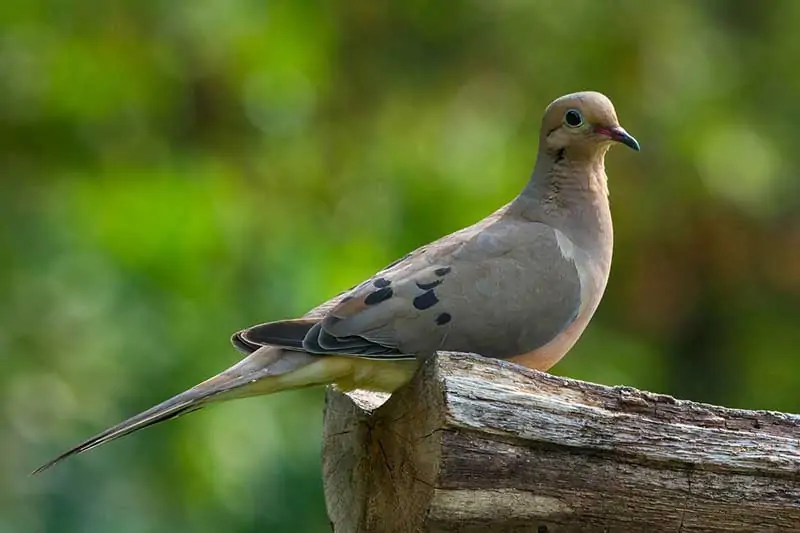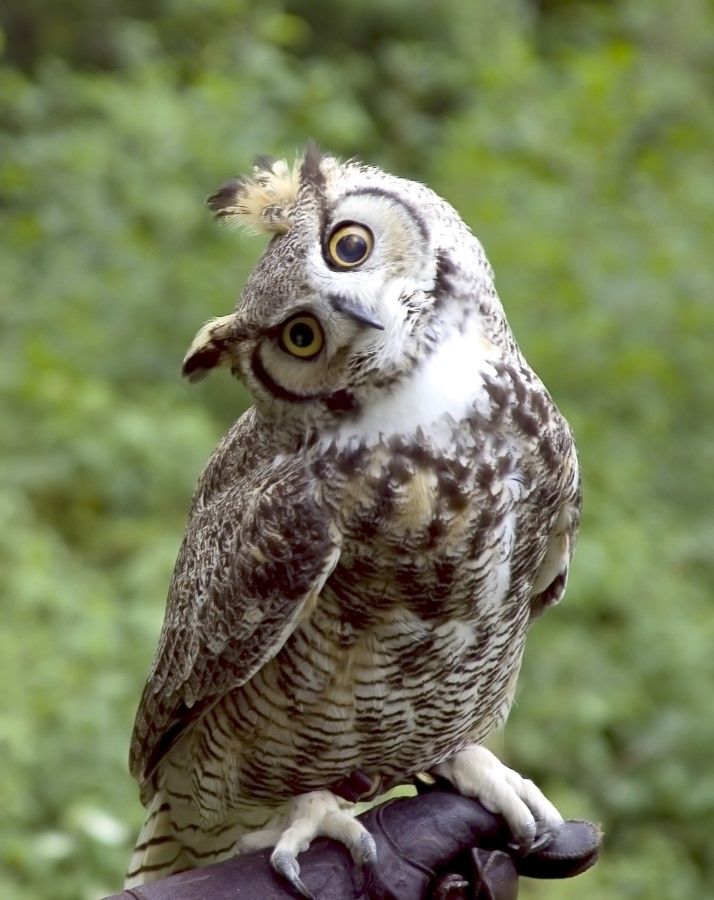Owls are majestic animals associated with nighttime and wisdom. That’s why phrases like ‘night owl’ and ‘wise owl’ are so common. These fascinating animals are great hunters and known to rotate their necks 270 degrees. They also make the unique hooting sounds that we commonly associate with them. But, why do owls hoot? Is it only to spook us out in the middle of the night? Let’s find out!
Read on to learn the answer to why owls hoot and interesting facts about their vocalizations.
Why do owls hoot?
Owls hoot as a way of communicating and different types of hoots will convey different messages. The various sounds they make help them adapt to their surroundings and protect themselves.
Typically you will hear an owl hoot when they are:
- Signaling the presence of a predator
- Claiming their territory and fending off potential intruders
- Approaching each other to signal an “inspection call”
- Announce themselves when finding a mate
- Communicating with their mate, including performing a duet together when reaffirming their bond
For some species, the hoot has individual variation, similar to how humans have different voices. Owls can then identify between strangers and neighbors and tend to be more aggressive toward owls they don’t know.

How do you differentiate owl hoots?
Since every hoot can signify something different, there are certain things to listen for to differentiate why an owl is hooting. For instance:
- Territorial or aggressive hoots: are typically louder, longer, and more dramatic
- Hoots between mates: are shorter sounds in a series and often occurs in a duet with two owls hooting back and forth
- Inspection calls: are short hoots and usually two-phrased hoots instead of three- or four-phrased
Do owls hoot in the daytime?
Very rarely will you hear an owl hoot in the daytime. However, two owl species that are most active during the daytime are the northern pygmy owl (Glaucidium gnoma) and the northern hawk owl (Surnia ulula). You might also hear the barred owl (Strix varia) in the daytime sometimes. Sometimes this species hunts during the day even though they are mainly nocturnal.
Most owls are nocturnal and will hoot the most right after sunset. You can also hear them hoot sporadically throughout the night or right before sunrise. Owls that are strictly nocturnal include the barn owl (Tyto alba) and the great horned owl (Bubo virginianus).

What owl goes hoo hoo hoo hoo?
When you hear the traditional hoo hoo hoo associated with owls, it’s most likely the great horned owl. These owls can be found throughout the U.S, including Alaska and have a gravelly hoot that carries far and can sound like a foghorn at a distance. When they are advertising their territories, they will use the soft, deep hoot that has the stuttering rhythm of hoo hoo hoo.

Is it bad to hear an owl hooting?
In reality, no. An owl hooting is as much bad luck as a black cat or spilled salt is. However, there are plenty of superstitions associated with an owl hoot. Since it can be spooky to hear their hoot at night, the sound has been linked to bad omens such as bad weather or imminent death.
Some Native American tribes, such as the Cherokee, believe that owls are connected to witches or death. So, when they hear an owl hooting at night, it signifies they are about to receive bad luck. The Romans also saw an owl hoot as bad luck and claimed the sound of a hoot predicted the deaths of well-known Romans.
Do owls whistle?
Yes, owls whistle and make other sounds besides the traditional hoot we associate them with. For instance, an owl’s scream is typically a high-pitched hoot. The vocal range of various owl species can include at least 13 sounds.

Other sounds owls make include:
- Chirps
- Screeches
- Barks
- Growls
- Shrieks
- Clucks
What sounds like an owl but isn’t?
Sometimes you may hear a hooting sound, but look around and can’t find an owl anywhere. It may be hiding really well or you heard a different bird completely. The two common birds whose calls can be mistaken as owls are the mourning dove (Zenaida macroura) and whip-poor-will (Antrostomus vociferus).

Mourning doves make a cooOOoo-woo-woo-woooo sound that can sometimes sound like hooting. The whip-poor-will sometimes makes a drawn-out and long whoo sound that can sound similar to owls.
Conclusion
Owls hoot as a way of communicating and use different ranges of their vocals to deliver different messages. From defending their territory to attracting a mate, owls use their calls to adapt and survive in the wild.

Besides the traditional hoo hoo hoo that we associate with owls, they also make plenty of other sounds, including screeches, barks, and chirps. When you hear an owl hooting it can be easy to be spooked, but it’s not always a bad omen. Sometimes you might be mistaking a call from a different bird completely!





